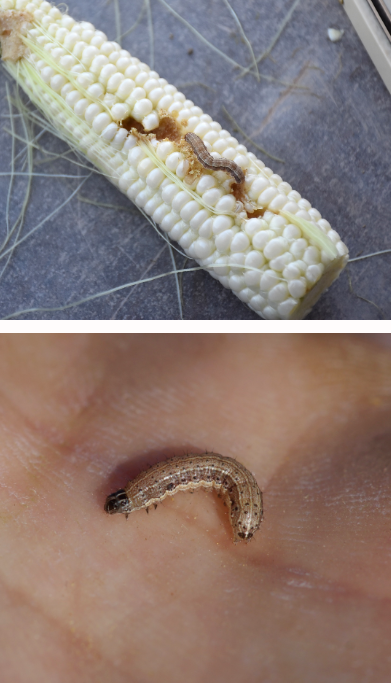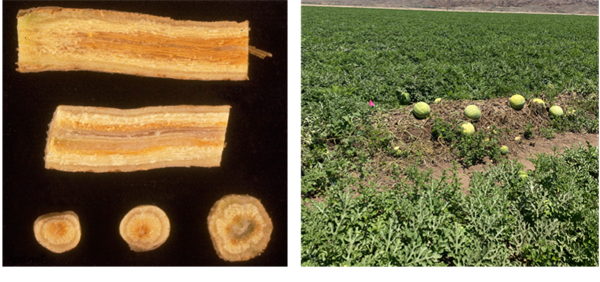Feb 19, 2020
Pest Activity in Desert Produce
Aphids: Aphid populations have remained relatively moderate so far this season. We are currently finding all 6 aphid species on lettuce right now including: Green peach aphid, Lettuce aphid, Foxglove aphid, Potato aphid,
Acythosiphon lactucae (seed-stem aphid), and Brown ambrosia aphid. Green peach aphid has been the most abundant at the Yuma Ag Center (YAC), but Lettuce aphids and Foxglove aphids are consistently showing up in untreated plots. PCAs should be on the lookout for Foxglove aphids on late season lettuce. There are still reports of Lettuce aphids in organic lettuce throughout the area. Because aphid species are inherently different in their susceptibility to insecticides, the proper choice of product is important for achieving adequate control. For more information on control visit
Foxglove aphids on Desert Produce and 2020 Aphid Control.
Thrips: Western flower thrips are light at YAC due to the recent rainfall and cooler weather. However, PCAs should expect thrips numbers to rapidly increase with the warmer weather. This is particularly important on late lettuce where “
bioconcentration" of thrips
occurs each year as lettuce acreage declines. Each time a lettuce field is harvested and disked, adult thrips disperse from these areas into the next available lettuce field. As the number of lettuce acres becomes reduced near the end of the season, this creates a bottleneck effect that concentrates high numbers of thrips adults on the remaining fields under production. They should also expect thrips adults to begin migrating into late season lettuce fields from recently harvested fields. This can often make chemical control of thrips populations very difficult, particularly in March, as thrips adults may continually re-infest fields following spray applications. See the
Thrips Control 2020 for more information.
Corn Earworm: We have had no reports of corn earworm larvae showing up in head lettuce from local PCAs, or found them at YAC, but we are starting to pick up moths in pheromone traps in the Yuma and Dome Valleys. Since, March is historically the time when spring lettuce tends to be infested heaviest by earworms, PCAs should consider intensifying their scouting efforts on the last remaining head lettuce fields. For more information see
Corn Earworm Management on Desert Produce
Cabbage Looper: Areawide, pheromone traps spiked last week. This is the most active we’ve seen cabbage looper moths all season. Larvae and eggs can be found on untreated lettuce at YAC. PCA’s should keep a keen eye out for looper larvae in late lettuce.
Diamondback Moth (DBM): Compared to this time last year, DBM moth counts are higher in most traps (see
DBM Trap Network). However, we are not seeing much larval activity in the field. If larvae do become abundant in late crops, all the key insecticide products used to control DBM larvae should provide control based on trials conducted this past fall. Furthermore, bioassays of DBM populations collected from cauliflower fields in November from the Yuma Ag Center showed no signs of DBM resistance to chlorantraniliprole. For more information see
Diamondback Moth Management Spring 2019.
To contact John Palumbo go to:
jpalumbo@ag.Arizona.edu
 Name That Pest Below:
Name That Pest Below: To contact John Palumbo go to: jpalumbo@ag.Arizona.edu
To contact John Palumbo go to: jpalumbo@ag.Arizona.edu










